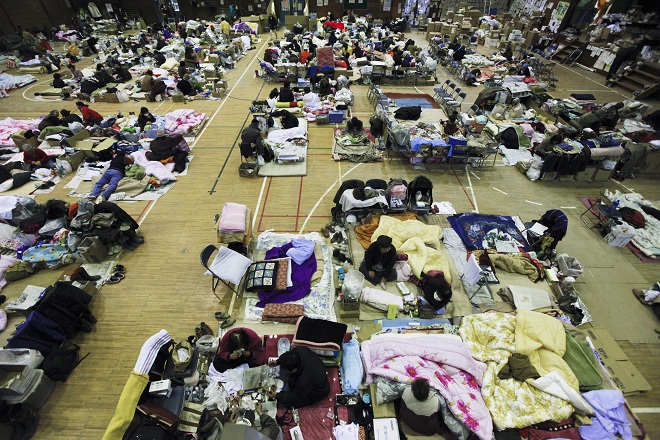13,000 evacuees still living in prefabs
March 9, 2018
Sendai, Miyagi Pref.- More than 13,000 evacuees in northeastern Japan are living in prefabricated provisional homes for those displaced by the March 2011 earthquake and tsunami, and the subsequent nuclear disaster.
As of the end of January this year, 29,619 evacuees were living in provisional housing in the hardest-hit prefectures of Iwate, Miyagi and Fukushima, about one-10th the level of six years ago. Nearly half of them, or 13,564 people, were living in prefabs.
According to the three prefectures and other sources, 8,900 households must leave their current provisional housing as their usage periods are set to end this month or later.
Of them, 173 households had not decided where to move, according to data as of February in Iwate and last December in Miyagi and Fukushima.
Prefectural government officials provide consultations to such households, making telephone calls and paying visits. They say circumstances stopping them from moving out vary from family to family.
"Some families can't find good places within the areas where their children would not need to transfer to other schools, even though they have enough financial resources," a Fukushima government official said.
"It's not just economic concerns," said Tomonori Hirai, a senior official of Personal Support Center, a Sendai-based support group for those struggling in life. The Miyagi government has commissioned the group to help evacuees find new homes to move into.
In the case of one family, an elderly member living alone in provisional housing has a different opinion from other members living elsewhere, Hirai said.
Some families never respond to calls from the group, Hirai said. "I suspect they don't answer because realities, including rents for new homes, look too tough for them to face."
Of those living in the provisional housing in the three prefectures, 13,492 households are expected to be allowed to stay for one more year. About 30 pct of them live in prefabs.
Keiko Saijo, 67, lives in such a prefab with her husband in Ishinomaki in Miyagi. They are set to move to permanent public housing for displaced disaster victims in the coming autumn.
The couple will mark their eighth year of life in provisional housing in summer. "The city would have finished building permanent housing earlier if it had been careful about the selection of land plots," Saijo said.
Another problem with prefabs for evacuees is that the simple buildings are aging. The disaster relief law limits the use of provisional prefabs for disaster victims to two years.
In fiscal 2016, the Iwate government implemented reinforcement and other work for 1,700 prefabs for disaster victims at a cost of 400 million yen. Jiji Press
Latest Videos
- THE UNTOLD STORY EXPERT INSIGHTS INTO THE UKRAINE
- NEGOTIATING A NEW ORDER US RUSSIA TALKS ON UKRAIN
- Ukraine: A Pawn in the Geopolitical Game? Will Trump Intervene?
- US VP VANCE CRITICIZES EUROPEAN DEMOCRACIES AT MUNICH SECURITY CONFERENCE
- UNCOVERING THE WEB OF DECEIT: CIA INFILTRATION OF THE MEDIA
- SHIFTING SANDS: TULSI GABBARD’S CONFIRMATION AND THE EVOLVING GLOBAL LANDSCAPE
- FAUCI SCANDAL: A THREAT TO GLOBAL HEALTH AND DEMOCRACY






